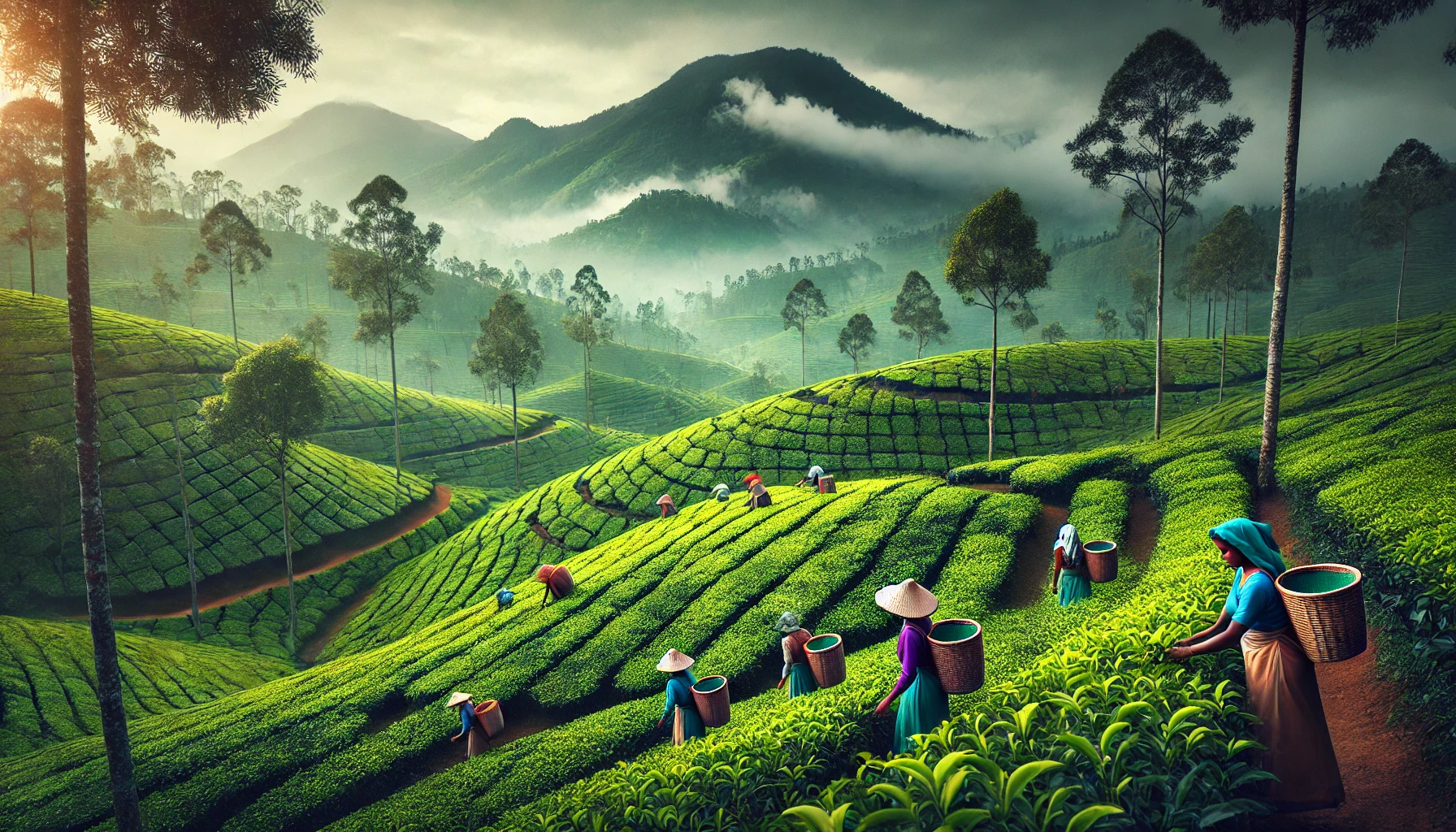
Sri Lanka, formerly known as Ceylon, is famous for its world-class tea. The country’s rolling hills and lush green landscapes are home to some of the most renowned tea plantations in the world. Whether you are a tea connoisseur or just someone looking to immerse yourself in the beautiful scenery, exploring Sri Lanka’s tea farms offers a unique experience. From sipping freshly brewed Ceylon tea to walking through picturesque fields, these farms offer a taste of tradition, history, and the vibrant culture of Sri Lanka.
Nuwara Eliya: The Heart of Ceylon Tea
Nuwara Eliya, often referred to as the “Little England” of Sri Lanka, is famous for its high-altitude tea estates. The cool climate and misty surroundings make it an ideal location for cultivating premium-quality tea. Visitors to Nuwara Eliya can enjoy guided tours through vast tea plantations, where they can learn about the intricate process of tea production—from picking the leaves to drying and processing them in the factories.
In addition to learning about tea, Nuwara Eliya offers stunning views over its rolling tea hills. These scenic landscapes are perfect for tea enthusiasts who want to capture beautiful photos or simply enjoy the tranquil environment. A visit to these farms is not complete without a tea-tasting session, where you can sample different types of Ceylon tea and discover the rich flavors that make it famous worldwide.
If you plan to visit, make sure to stop by the tea factory tours offered at various estates. This provides a deeper understanding of the Sri Lankan tea industry and allows visitors to see how tea leaves are transformed into the delicate beverages we enjoy.
Kandy: Exploring Tea Heritage
Kandy, located in the central region of Sri Lanka, is home to some of the oldest tea plantations in the country. Known for its historical significance and cultural richness, Kandy also boasts several tea estates that offer a more traditional experience. A visit to Kandy’s tea farms is a journey back in time, where you can explore age-old methods of tea processing.
Tea estates in Kandy are often located amidst scenic landscapes, surrounded by misty mountains and valleys. The cool and humid climate creates the perfect conditions for cultivating rich and flavorful tea. As you explore these plantations, you will have the opportunity to interact with local workers who have perfected the art of tea plucking over generations.
Moreover, the Kandy region is known for its mid-grown tea, which has a unique taste profile compared to high-grown varieties. Here, visitors can experience a true sense of Sri Lankan tea culture and gain insights into the practices that have been handed down through the decades.
Ella: Tea Gardens and Scenic Trails
Ella is a must-visit destination for travelers looking for a combination of tea plantations and breathtaking natural beauty. This quaint town in Sri Lanka’s hill country is surrounded by stunning tea estates that stretch across the landscape, providing a serene backdrop for those looking to escape the hustle and bustle of city life. Ella is famous for its scenic train ride that passes through lush tea gardens, making it an ideal location for tea lovers and adventure seekers alike.
Many tea estates in Ella offer guided tours that walk visitors through the tea-making process. You’ll get to see the tea leaves being plucked and observe the delicate art of rolling and drying them to perfection. These tours often end with a tasting session where you can sample freshly brewed tea, offering a chance to appreciate the distinct flavors of the region.
For those who enjoy outdoor activities, the tea estates in Ella also feature several hiking trails that weave through the tea fields and lead to stunning viewpoints. The blend of natural beauty and authentic tea experiences makes Ella one of the top destinations for those exploring Sri Lanka’s tea culture.
Uva Province: Discovering Unique Flavors
The Uva Province is known for producing some of the finest tea in Sri Lanka, with a distinctive flavor that sets it apart from other regions. Located in the southeastern part of the country, Uva offers a different atmosphere with its dry, windy climate, which contributes to the unique taste of Uva tea. The tea estates here are less crowded than those in more popular regions, making it a perfect destination for those seeking a more tranquil and intimate tea experience.
Visiting a tea farm in Uva allows you to explore sprawling tea fields that stretch over the hilly terrain. The estates here are known for their high-quality Ceylon black tea, which has a smooth and mild flavor profile that appeals to a wide range of palates. Many of these farms welcome visitors with open arms, offering a chance to witness the traditional methods of tea cultivation.
In addition to tea tasting, Uva’s tea plantations are great for nature lovers who want to take in the surrounding scenery. The views over the valleys and hills are breathtaking, offering a perfect backdrop for photography and peaceful reflection amid the lush greenery.
These tea farms in Sri Lanka provide a perfect blend of tea culture, history, and stunning landscapes. Whether you are looking to learn more about the art of tea-making or simply want to enjoy the serene beauty of the plantations, each destination offers a unique experience. By visiting these tea estates, you will not only taste the world’s finest tea but also connect with the rich heritage of Sri Lanka’s tea industry.








